|
Printables |
PowerPoints |
Online exercises |
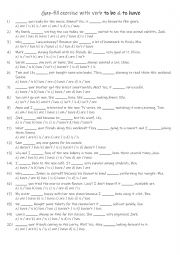
|
A1+-A2 Present simple multiple choice with verb to be & to have
Students read the present simple sentences to see which auxiliary verb is needed to complete the gap-fills. Answers on page 2.
Level: elementary
Age: 8-100
Type:
Downloads: 107
|
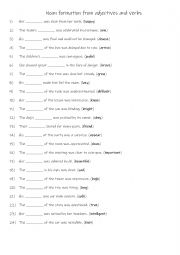
|
A2-B1 Noun formation from adjectives and verbs
Understanding how to create nouns from adjectives and verbs broadens students� vocabulary. For instance, knowing that "happy" (an adjective) can become "happiness" (a noun) or "decide" (a verb) can become "decision" (a noun) enriches their ability to express ideas. Using a variety of noun forms can make your writing and speaking more dynamic and en...
Level: intermediate
Age: 8-100
Type:
Downloads: 120
|
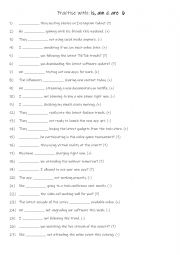
|
A1 Practise with is, am & are 6
Students read the sentence and complete the sentence with the correct form of the verb to be. They use the (+) or (-) sign at the end of the sentence to see if it needs a positive or negative form of the verb to be. Each form is used 3 times! Answers on page 2.
Level: elementary
Age: 7-100
Type:
Downloads: 134
|
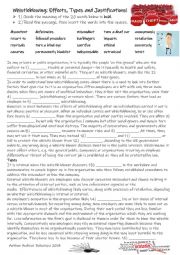
|
Whistleblowing: The Effects, Types and Justifications
850-Word reading article with a 20-word gap fill exercise about whistleblowing. It takes an in-depth look at why people do it, the ramifications for both the whistleblower and the organisation.This sheet is suitable for higher level B1 to C1 students of all ages. An answer sheet is included. For higher level students they could be put in groups to ...
Level: intermediate
Age: 12-100
Type: worksheet
Downloads: 1891
|
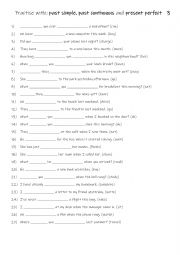
|
A1+-A2 Practise with past simple, past continuous and present perfect 3
First, students need to familiarise themselves with the 3 tenses and their use. Then they read the sentences to work out which one is needed to complete the gap-fill using the given verb in (). Each tense is used 9 times! Answers on page 2
Level: elementary
Age: 8-100
Type:
Downloads: 103
|
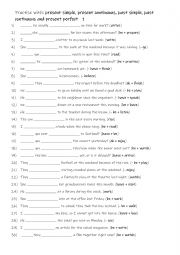
|
A2-B1 Practise with: present simple, present continuous, past simple, past continuous and present perfect 1
Students at the A2-B1 level should practise the present simple, present continuous, past simple, past continuous, and present perfect tenses as they form the foundation of clear and effective communication. These tenses enable learners to discuss routines, habits, and facts, describe ongoing actions, recount past events, and share experiences or ac...
Level: intermediate
Age: 9-100
Type:
Downloads: 120
|
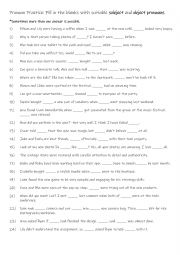
|
A1+-A2 Complete the sentences with the correct personal subject & object pronouns
Students read the sentences to see which type of personal pronoun or object pronoun is required to complete the gap-fill. Answers on page 2.
Level: elementary
Age: 8-100
Type:
Downloads: 120
|
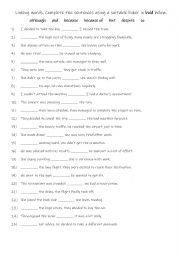
|
A2+-B1 Linking words. Complete the sentences using a suitable linker in bold below.
Linking words. Students complete the sentences using a suitable linker in bold below.
although and because because of but despite so. Answers on page 2.
Level: intermediate
Age: 10-100
Type: worksheet
Downloads: 124
|
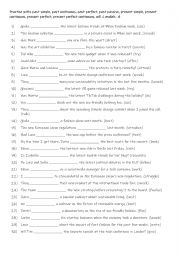
|
B1+-B2 Practise with past simple, past continuous, past perfect, past passive, present simple, present continuous, present perfect, present perfect continuous, will & modals 4
Learning these tenses helps students communicate clearly and accurately in different contexts. The past tenses describe completed actions, ongoing events, or actions that happened before another past event. The present tenses express routines, ongoing actions, and experiences linked to the present. The future tense (will) is used for predictions an...
Level: intermediate
Age: 10-100
Type:
Downloads: 118
|
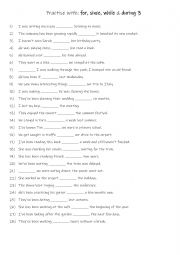
|
A2+-B1 Practise with for, since, while & during (3)
Learning to use for, since, during, and while is important because these words help student�s express time accurately in English, especially when talking about the duration and timing of events. For indicates the length of time an action takes place, while since pinpoints when an action started and continues until now, helping to show continuity. D...
Level: intermediate
Age: 9-100
Type:
Downloads: 100
|
|
|
|
|












